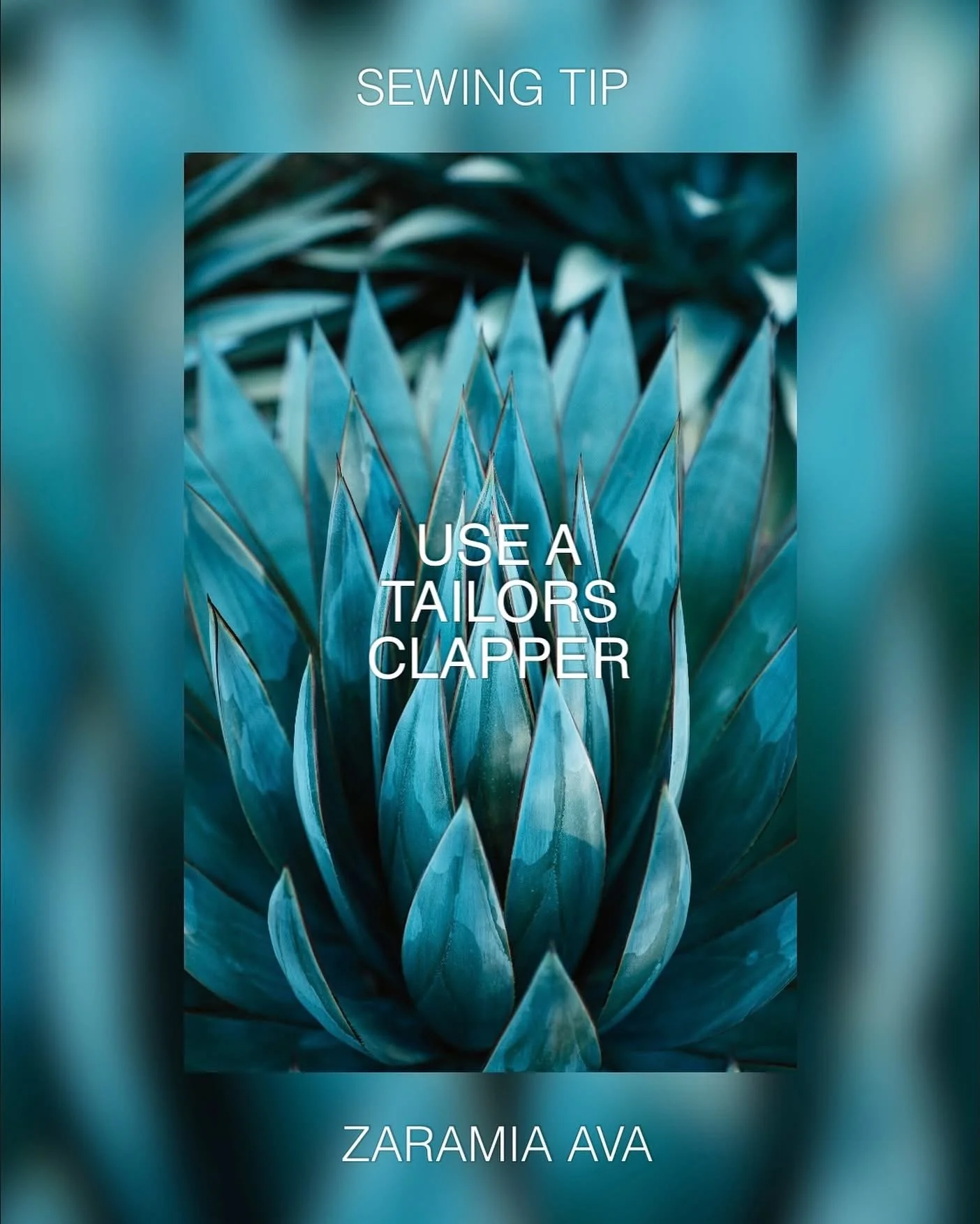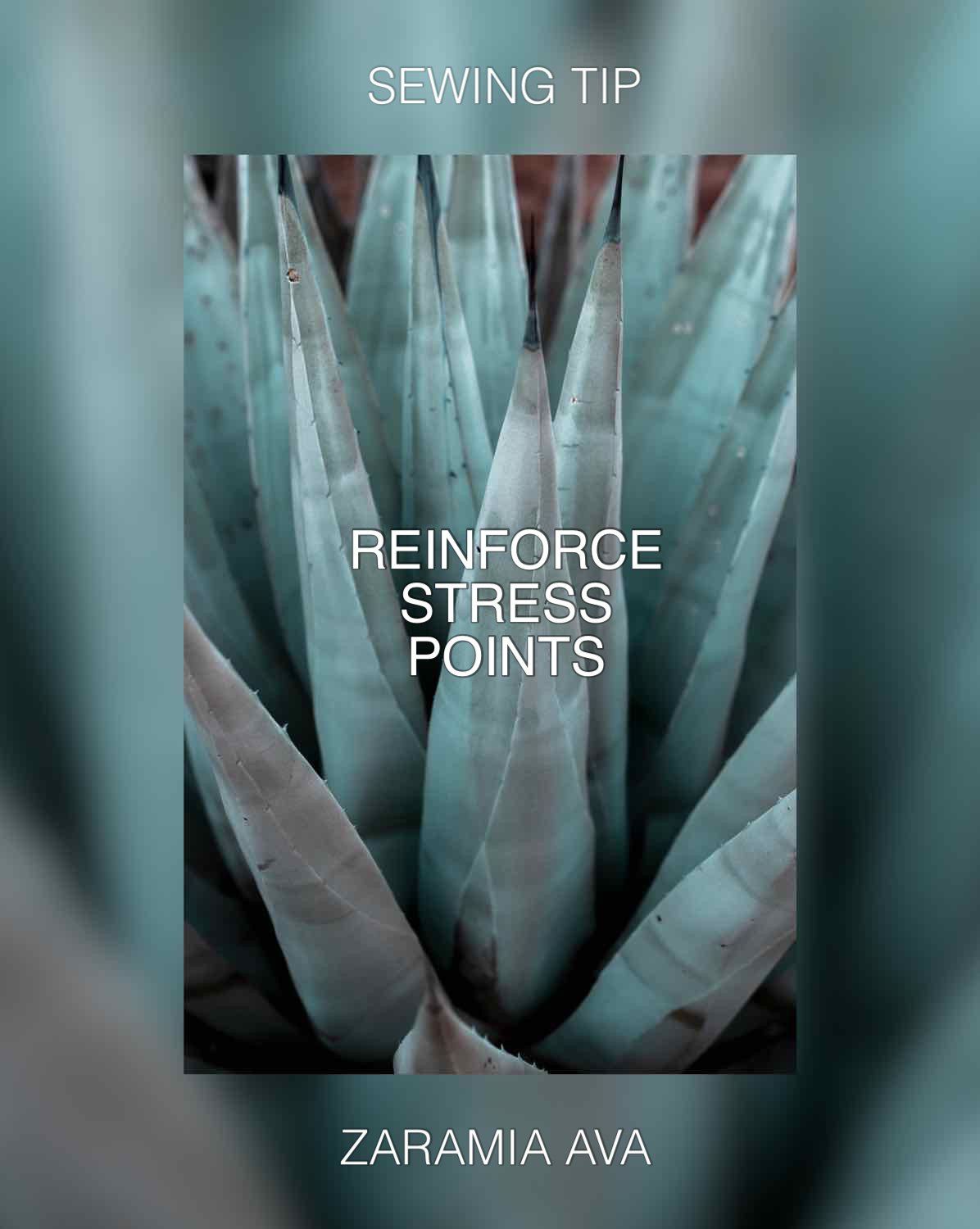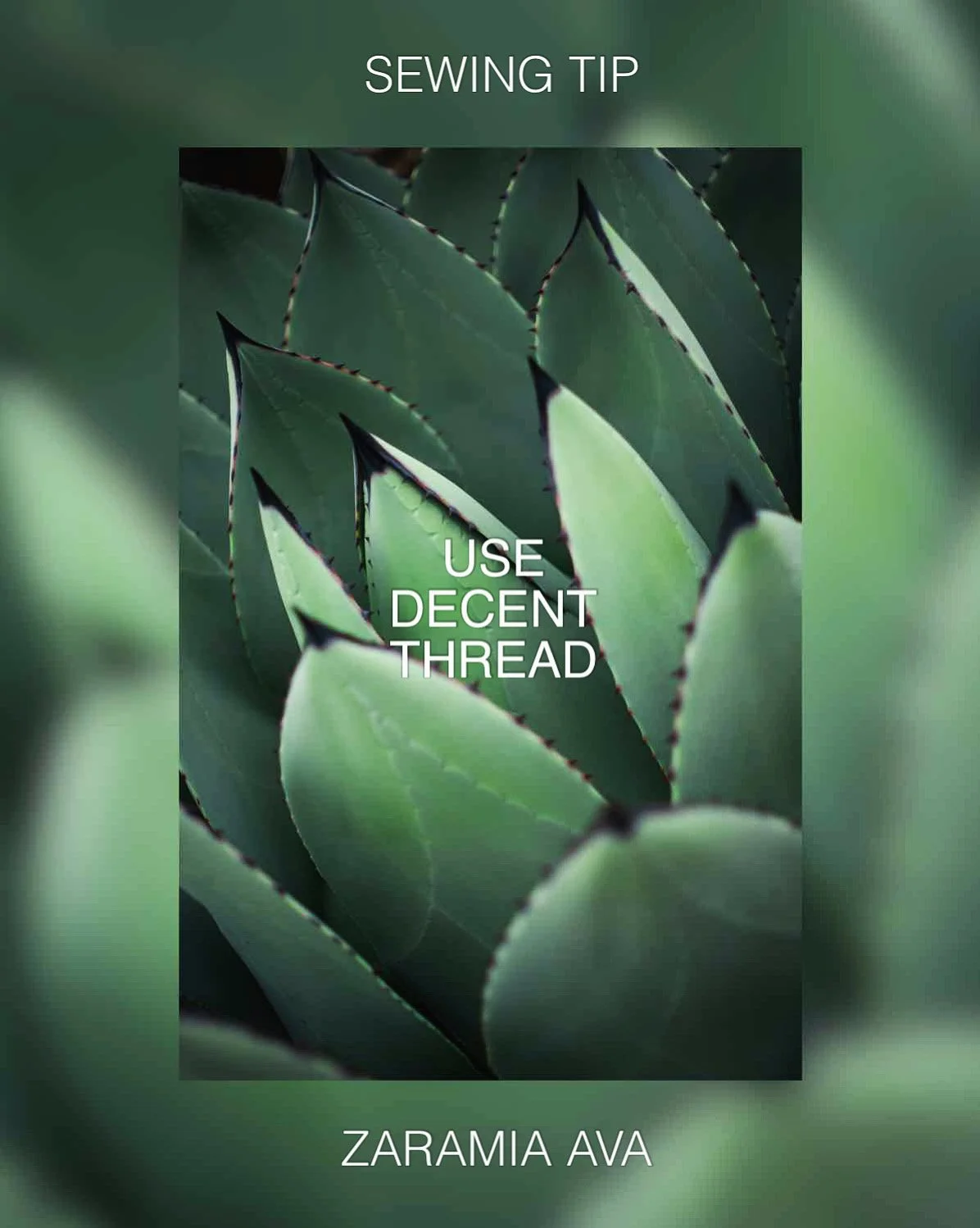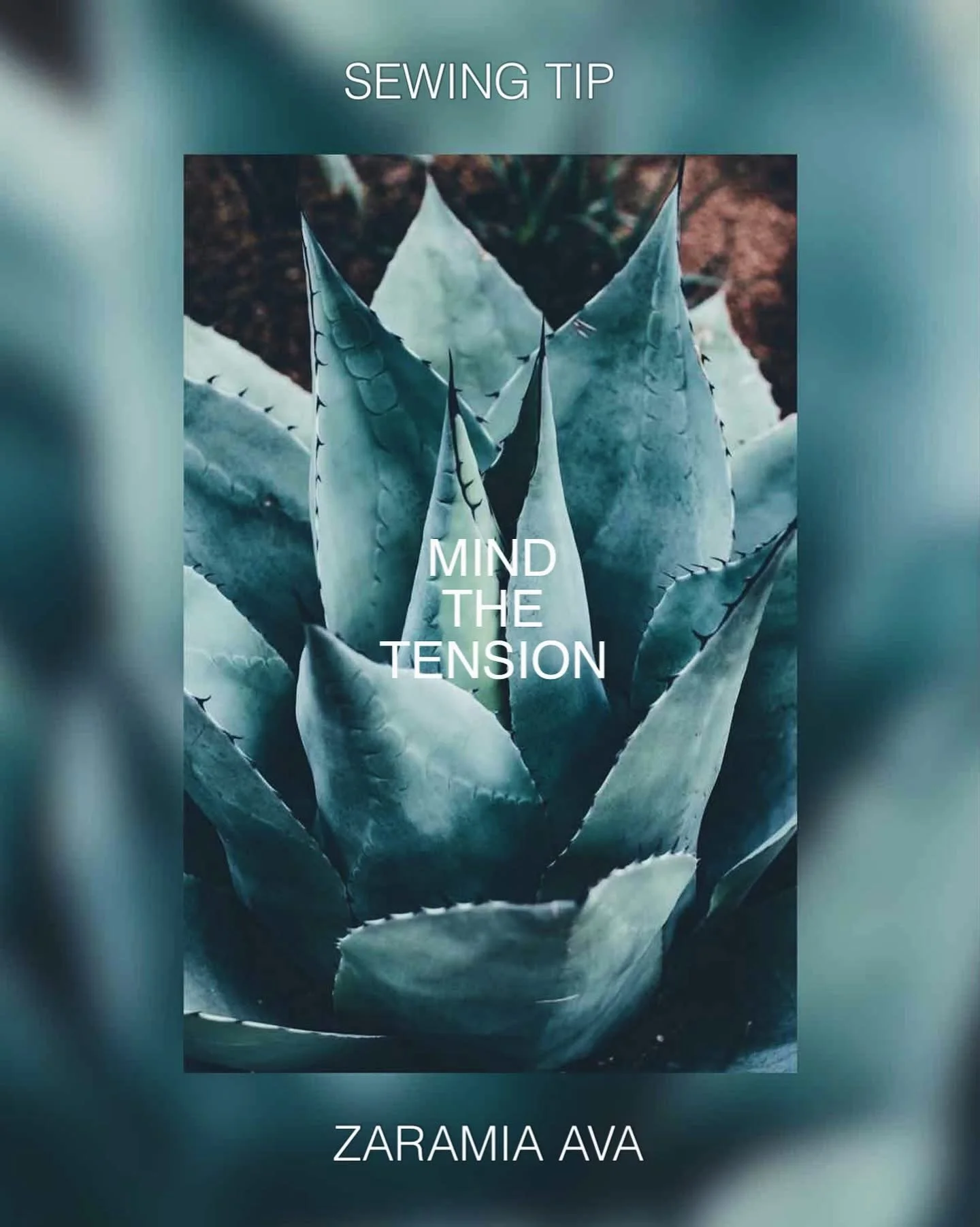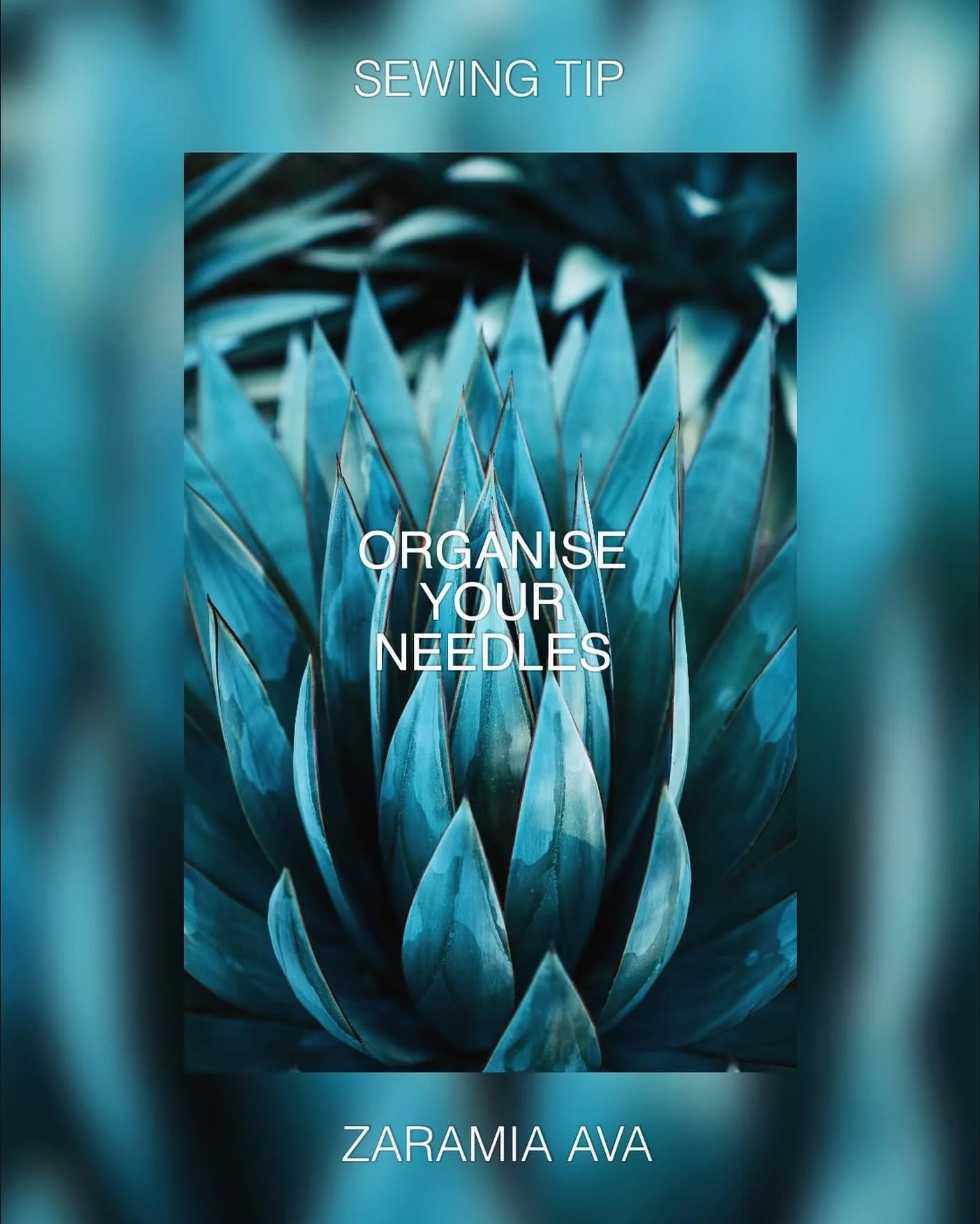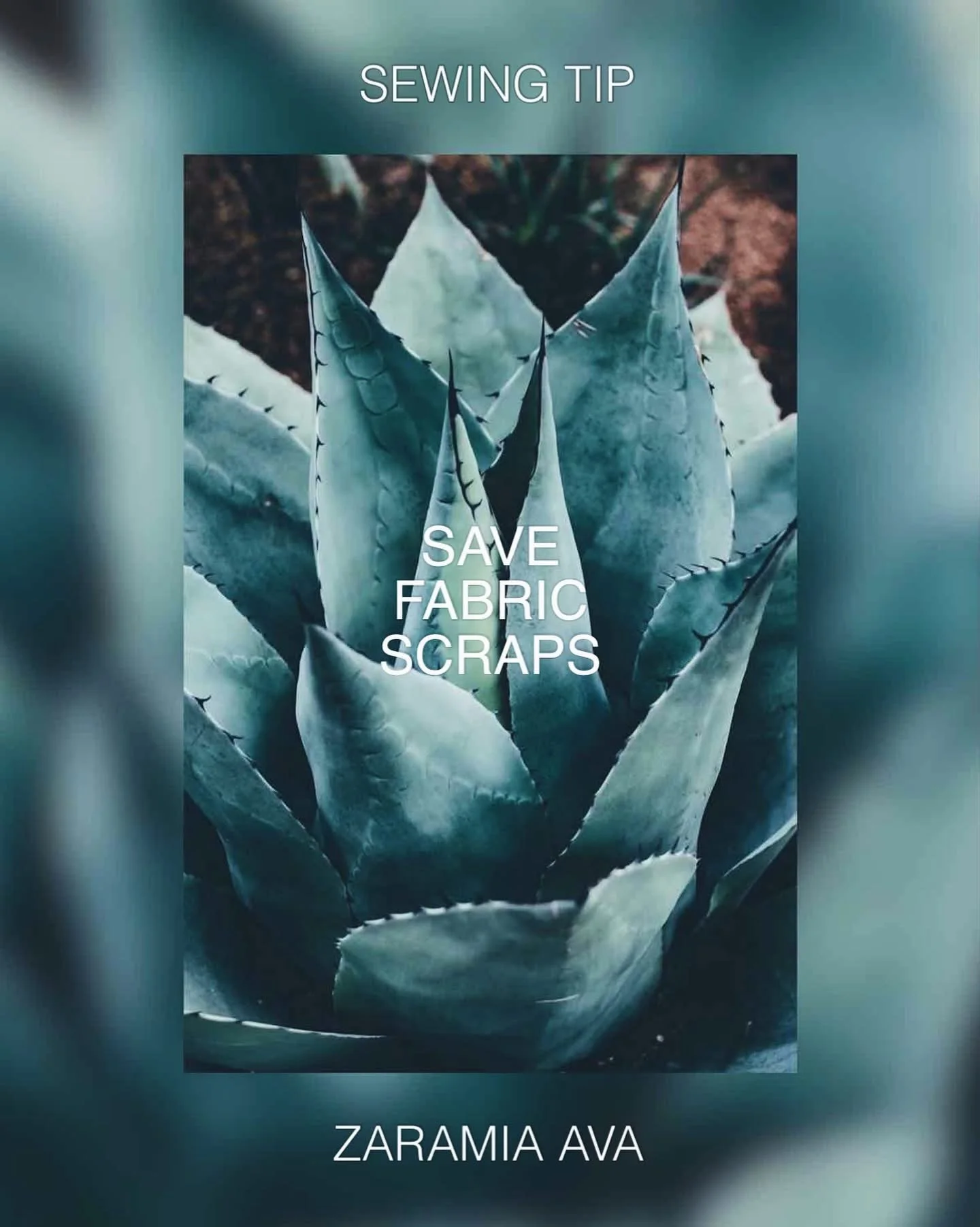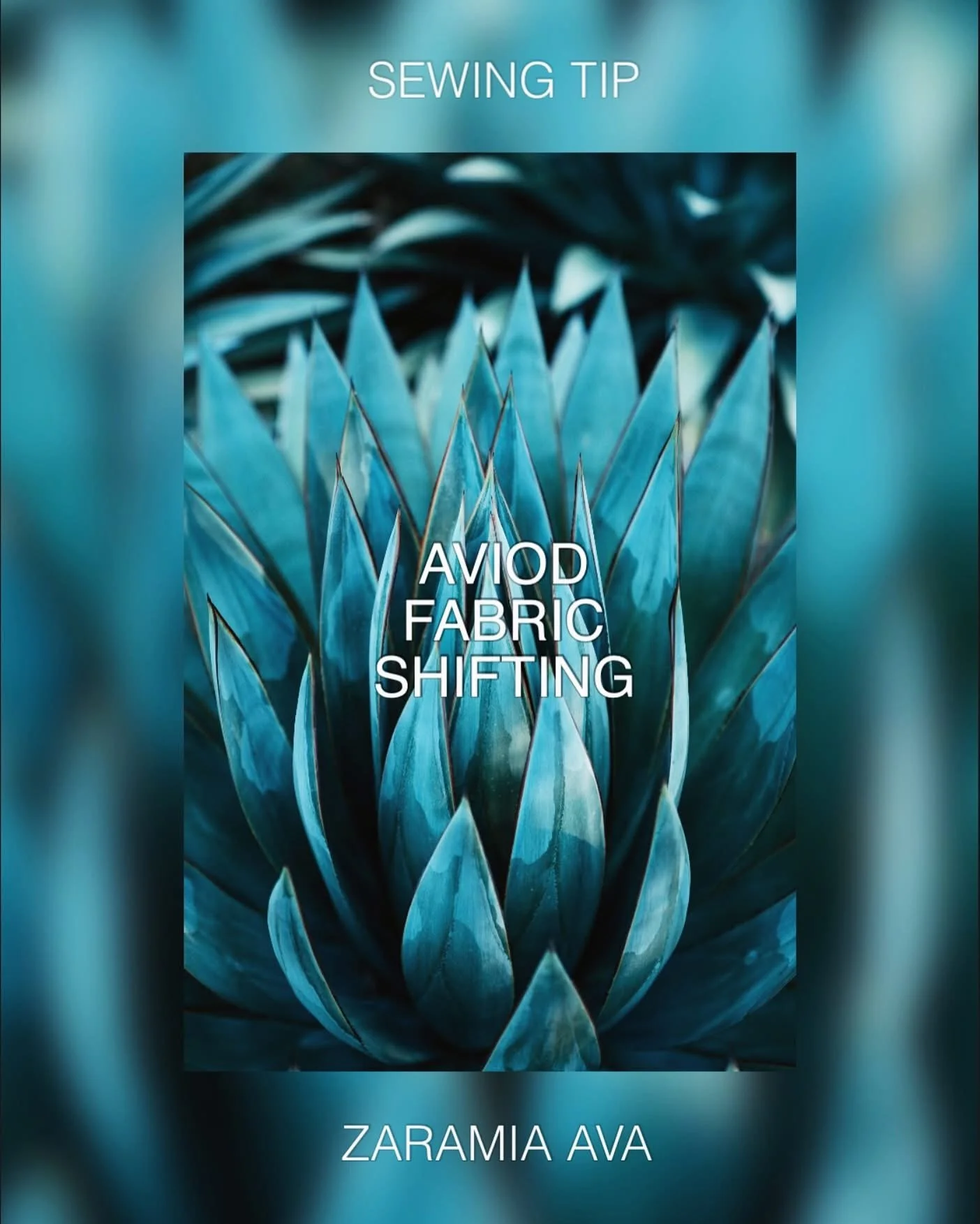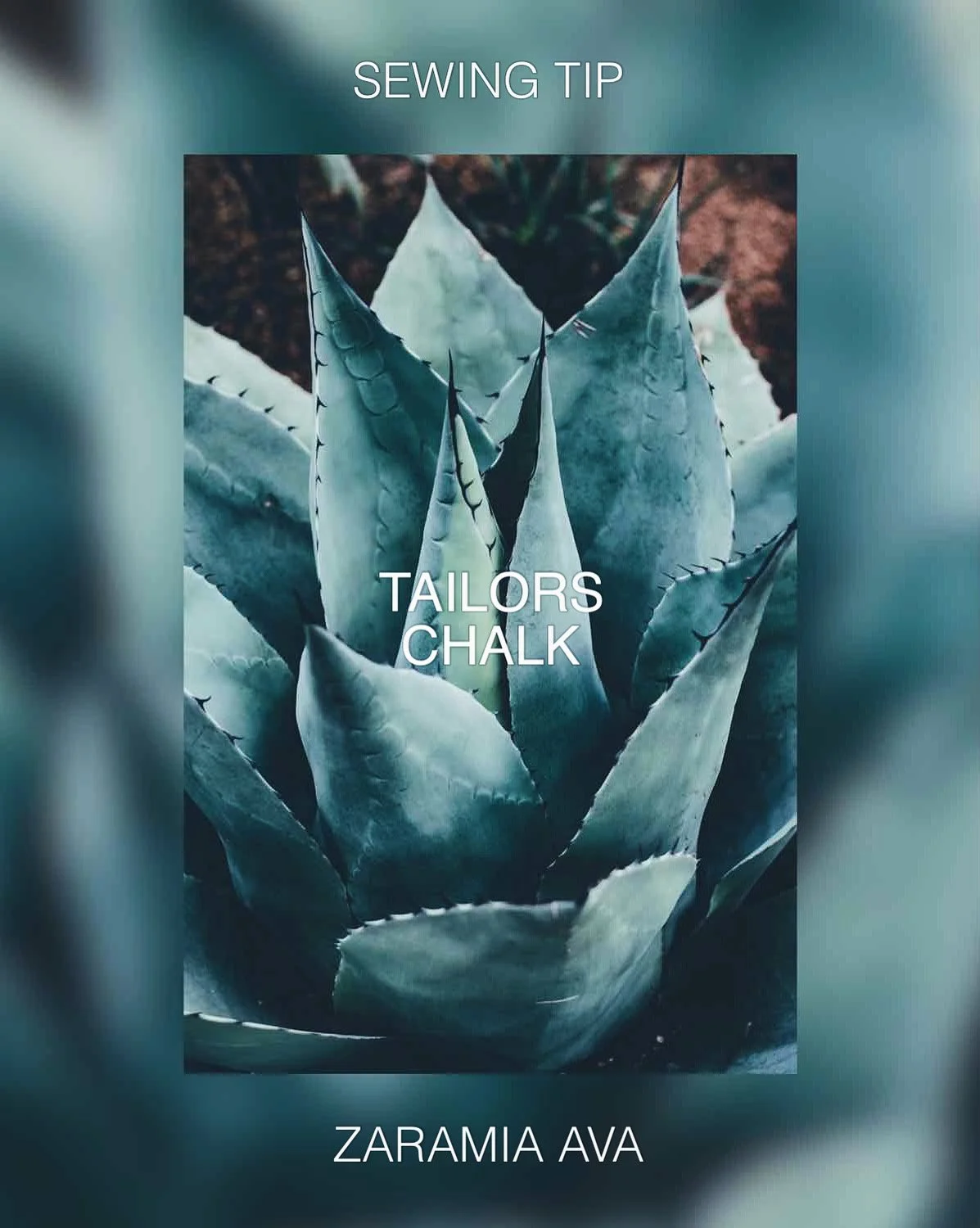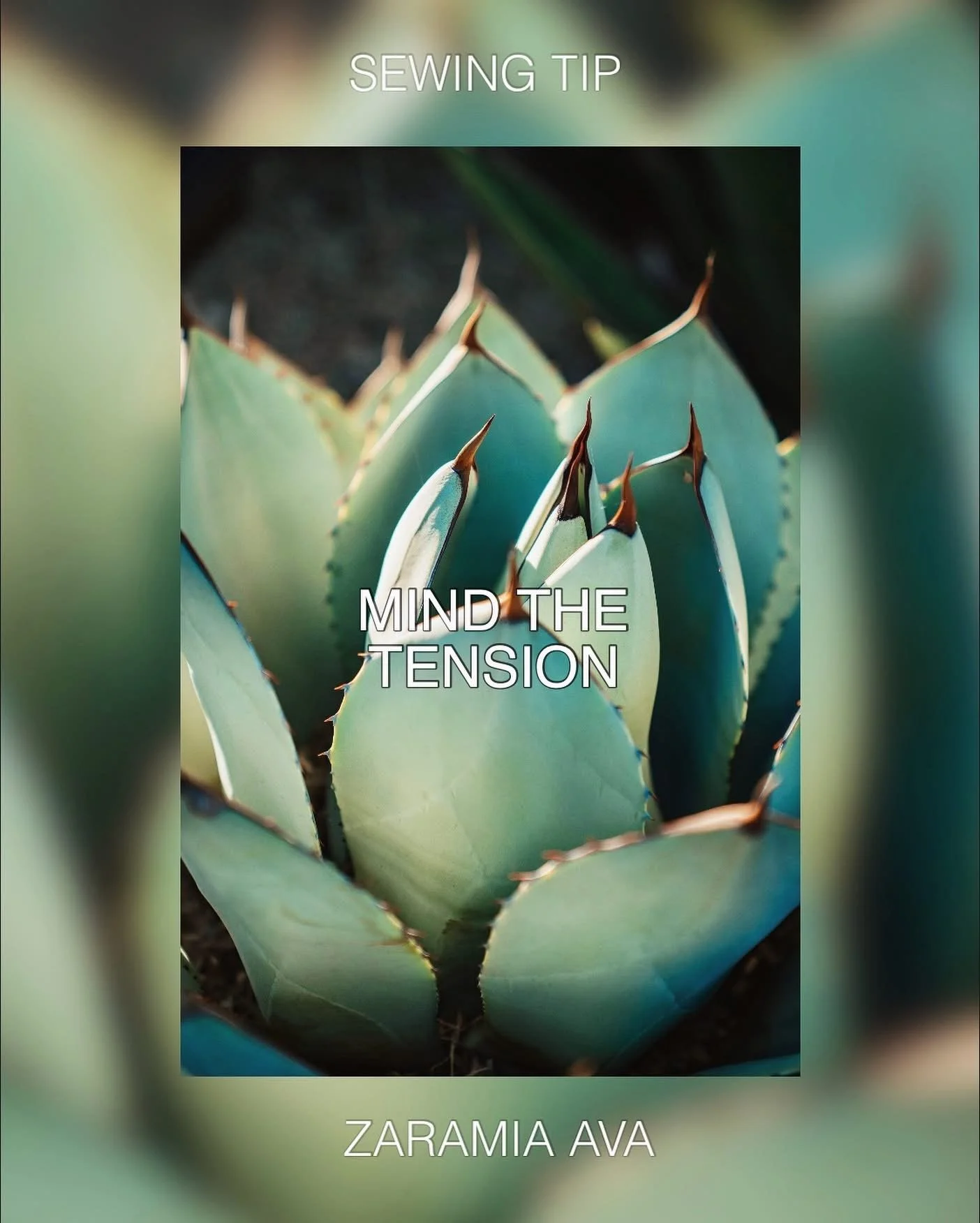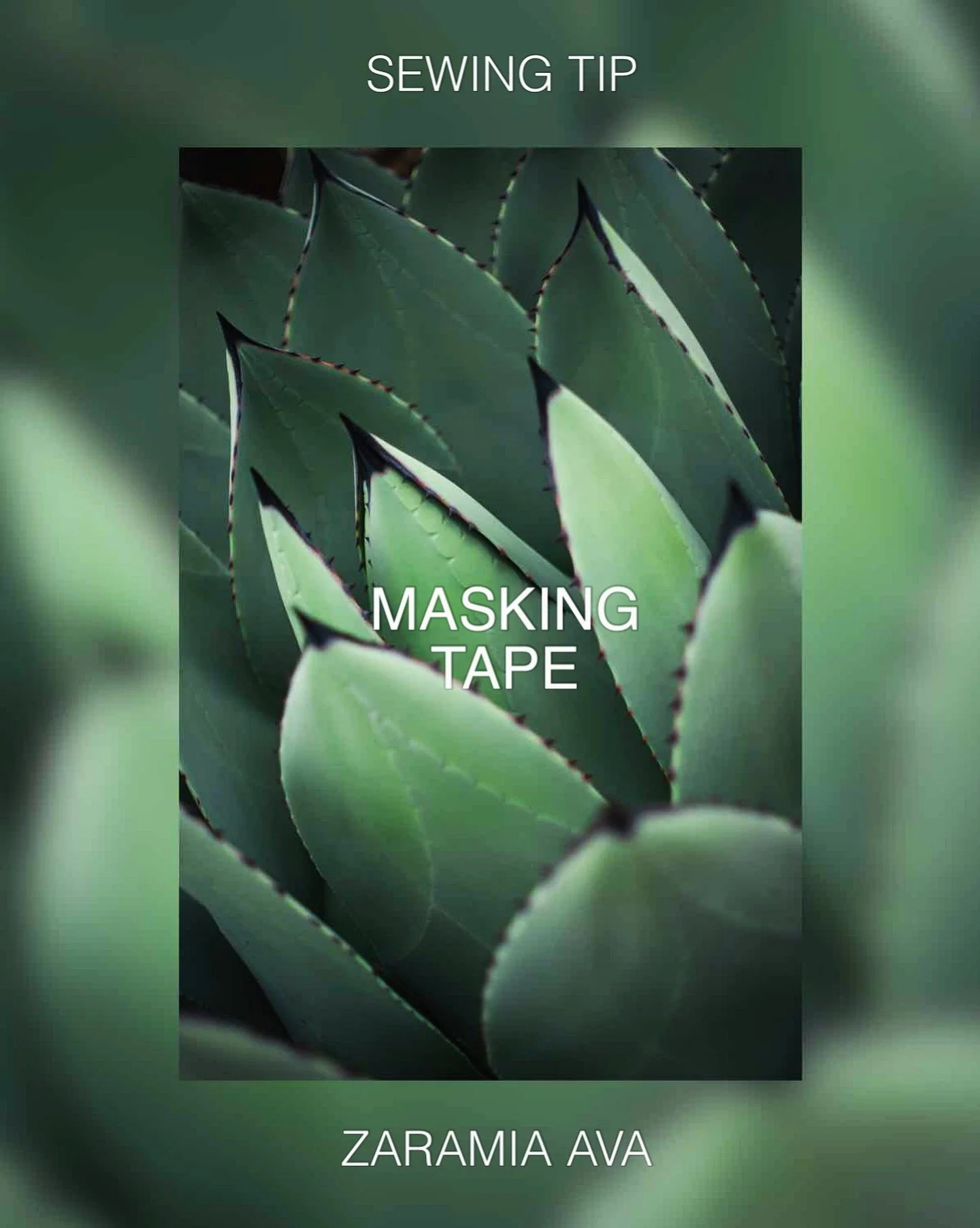Use a Tailors Clapper
Ever wondered how to get the wonderfully neat pleats and seams you see in tailored clothing? A tailor’s clapper is a smooth block of wood that can be used to get a perfect finish.
First press with a hot steam iron then remove the iron and press the clapper on to the fabric. The hardwood block absorbs the heat and moisture from the clothing fixing the seam or pleat crisply.
Clappers usually have rounded edges for a comfy grip. You can get them from Etsy, Dunelm and haberdashers.
Happy Sewing!
#SewingOrganisation #Sewing #Fabric #SewingSupplies #CreativeStorage #UpcycleFabrics #SewingCommunity #SewingInspiration #SewingTips #StashBusting #FabricCollection #EcoFriendlySewing #SewingProjects #SustainableCrafting #ZARAMIAAVA
Reinforce Stress Points
For good finishing and to make your garments and projects last, it’s important to reinforce stress points like seams that come under tension.
• Sew over the same seam twice in areas like armholes and crotches. Use back stitch if hand-sewing.
• Always backstitch with your machine at the beginning and end of seams to secure the stitches and prevent them from unravelling.
• Use French seams, enclosing the fabric edges to add strength to garments made from lightweight fabrics
Happy Sewing!
#SewingOrganisation #FabricStash #SewingSupplies #CreativeStorage #UpcycleFabrics #SewingCommunity #SewingInspiration #CraftyIdeas #SewingTips #StashBusting #FabricCollection #EcoFriendlySewing #SewingProjects #SustainableCrafting #ZARAMIAAVA
Use Decent Thread
Don’t let your sewing project down by using cheap thread. Choosing a high quality thread means smoother sewing, fewer breakages, fewer tension issues and a professional finish. It also makes your finished item more durable.
Don’t forget to select the right weight of thread for the job; topstitching looks 100% better in the correct thread.
Happy Sewing!
#SewingTips #SewingCommunity #DIYFashion #SewingForBeginners #Sewing #Handmade #Crafting #SewingInspiration #SewingProjects #SewingSkills #SewingTutorial #EcoSewing #SustainableSewing #ZARAMIAAVA
Use a Needle Threader
A simple one today!
Using a needle threader can take the frustration out of preparing to hand-sew. Particularly useful if your thread is on the thick side or if you’re sewing with a fine needle, you can get threaders in different forms from sewing shops and online.
Happy Sewing!
#SewingTips #SewingCommunity #DIYFashion #SewingForBeginners #SewingPatterns #Handmade #Crafting #SewingInspiration #SewingProjects #SewingSkills #SewingTutorial #EcoSewing #SustainableSewing #ZARAMIAAVA #sewing
Mind the Tension
Selecting the correct tension for your fabric is key to getting an even, durable finish on your stitching.
Weight of fabric, number of layers, stretch, thickness of thread and stitch type affect tension.
Turn the tension down if you are seeing little loops on the top of the work (or if you are seeing bunching) and turn it up if loops are appearing underneath. Adjust the dial in small increments and always test your setting on a scrap of the fabric you’ll be sewing.
Happy sewing!
#SewingTips #SewingCommunity #DIYFashion #SewingForBeginners #SewingPatterns #Handmade #Crafting #Sewing #SewingProjects #SewingSkills #SewingTutorial #EcoSewing #SustainableSewing #ZARAMIAAVA
Organise your Needles
Sewing is so much more enjoyable if you know where your equipment is and it’s in good condition. And what is more important than needles?
If you’re using a machine, you probably have spare needles in a variety of gauges to manage different fabric weights. Try keeping them in a tin or small box in their original packaging so you know what’s what.
Most projects involve some hand-sewing. Make sure you keep a good stock of different sizes for different fabrics and threads. Try a traditional needle case, pill containers, pin cushion, compartmentalised container or even a small photo album with labelled sections.
#SewingOrganisation #FabricStash #FabricFrenzy #SewingSupplies #CreativeStorage #UpcycleFabrics #SewingCommunity #SewingInspiration #SewingTips #FabricCollection #EcoFriendlySewing #SewingProjects #SustainableCrafting #ZARAMIAAVA
Make Pattern Notes
There’s nothing worse than reinventing the wheel especially when it was difficult the first time round! As a gift to your future self, keep notes of any alterations or tweaks you make to patterns so that you know for next time you do the project.
You can even stitch a lovely cover for your notebook and keep it handy while you sew. Write them both on your pattern and in the notebook!
#SewingOrganisation #FabricStash #SewingSupplies #Creative #UpcycleFabrics #SewingCommunity #sewing #SewingInspiration #CraftyIdeas #SewingTips #FabricCollection #SewingProjects #SustainableCrafting #ZARAMIAAVA #PatternCutting #Pattern
Save your Fabric Scraps
In our zero waste studio, we collect scraps from pattern cutting and make beautiful things from as much as possible. We know that a bag stuffed with crumpled fabric of different sizes and colours is not very inspiring.
Here are a couple of our tips for managing your fabric scraps.
• Store your scrap fabric carefully to keep it clean and flat. You’ll feel more inspired by looking at well-kept fabric and reduce washing and pressing
• Sort it and separate it by size or colour to help you find what you need
• Label your storage bags/ boxes
• Use very small scraps for stuffing toys or even setting in resin to make jewellery.
#ScrapFabricStorage #SewingOrganisation #FabricStash #SewingScraps #CraftRoomStorage #FabricFrenzy #SewingSupplies #CreativeStorage #UpcycleFabrics #SewingCommunity #SewingInspiration #ZARAMIAAVA Sewing #SewingTips #FabricStash #FabricCollection #EcoFriendlySewing #SewingProjects #SustainableCrafting
Avoid Fabric Shifting
Slippery fabrics like silk, satin, chiffon, or polyester can be very hard to machine sew. Here are a few tips to help you manage them:
• Use a piece of tissue paper under the fabric and tear off when finished
• Use a walking foot to help feed the fabric evenly.
• Fabric clips instead of pins can help secure a firm hold
• Increase stitch length
• Opt for a lighter presser foot pressure
• Use basting stitches to temporarily hold layers together for easier sewing
#SewingTips #FabricHacks #SewingCommunity #SewingProjects #SewingInspiration #SewingSkills #SewingForBeginners #SewingPatterns #SewingIdeas #SewingFun #SewingCrafts #SewingJourney
Angle your Cut
Most projects involve at least a little hand sewing and threading a needle can be a pain, especially if you are using a fine one with a small eye.
Our tip is to use some sharp scissors to cut the end of your thread at an angle to provide a neat narrow point. You’ll find it’s much easier to pass it through the eye.
Happy Sewing!
#SewingTips #SewingCommunity #DIYFashion #SewingForBeginners #SewingPatterns #Handmade #Crafting #SewingInspiration #SewingProjects #Sewing #SewingSkills #SewingTutorial #SustainableSewing #ZARAMIAAVA
Save Fabric Scraps
There are always bits of fabric left over from big sewing projects. Apart from scarves and scrunchies, here are a few things you might not have thought of for using up your scraps
1. You can make unique jewellery pieces like fabric bracelets or earrings by cutting and sewing small pieces together.
2. Combine several scraps to make coasters or placemats, adding a pop of colour to your dining table.
3. Small keychains or bag fobs from fabric scraps make a quick and easy project.
4. Last but not least, you can always practice new sewing techniques or patterns without the pressure of using new fabric.
#SewingTips #SewingHacks #SewingProjects #SewingForBeginners #SewingCommunity #Sewing #SewingInspiration #SewingPatterns #SewingSkills #SewingTechniques #FabricScraps #SewingIdeas #ZARAMIAAVA
Maintain Your Machine
Maintaining your sewing machine really makes a difference for smooth running, clean results and a more enjoyable sew.
There is nothing worse than the machine jamming right in the middle of a project. Cleaning and oiling regularly help prevent that.
Clean the bobbin case, feed, and other accessible areas regularly using a soft brush or a vacuum attachment. This helps remove dust and lint that can clog up the machine.
Check the manufacturer’s instructions on where and how to oil your machine. Not all machines require oiling, but those that do should be oiled regularly to keep the parts moving as they should.
Make sure to cover your machine when not in use.
A well-running machine makes for happy sewing!
#SewingMachineMaintenance #SewingTips #SewingMachineCare #SewingCommunity #SewingProjects #DIY #Sewing #SewingHacks #SewingMachineCleaning #SewingMachineTips #SewingBasics #SewingSkills #ZARAMIAAVA
Tailors Chalk
Tailor’s chalk can make all the difference in sewing. Chalk has been used for thousands of years but heat-sensitive and water-soluble pens are now available.
Here are our tips on how to use chalk or specialist pens for a perfect finish:
1. Trace around your pattern pieces on fabric to help ensure accurate cutting and alignment.
2. Draw straight lines for hems, seams, or darts to help maintain straight lines. T
3. Mark the fabric grainline to ensure your pieces are cut in the correct direction, which is important for fabric drape and pattern matching.
Tailor’s chalk and handy modern alternatives like friction pens and water-soluble pens make temporary marks that disappear completely making them an excellent sewing secret weapon. They’re cheap to buy too!
#SewingTips #SewingHacks #SewingProjects #SewingForBeginners #SewingCommunity #SewingInspiration #SewingPatterns #SewingSkills #SewingTechniques #SewingAddict #SewingFun #SewingIdeas #Sewing
Mind The Tension
Tension is crucial to successful machine sewing.
To create a good finish, you need to ensure that the tension of the top thread is set correctly for the fabric you’re using.
If the tension is too tight, the thread may break, and you might see puckering on the fabric.
If the tension is too loose, you may see loops of thread on the underside of the fabric and a lack of control over the stitches.
Consult your machine manual to find out how to adjust the tension and always test the setting on a scrap of the fabric you’re using.
#SewingTips #SewingHacks #SewingProjects #SewingCommunity #CraftyIdeas #SewingForBeginners #SewingSkills #CreativeSewing #SewingTechniques #FabricCrafts #SewingAdvice #SewingPatterns #Sewing #ZARAMIAAVA
Use a Seam Ripper
A seam-ripper is a must-have tool for any sewer. Whether you need to correct a mistake or take apart garments for upcycling, it’s the neatest and cleanest way to cut through stitches.
“Don’t be tempted to use your scissors.”“Insert the ripper blade carefully under the stitch and slice through it. Press the fabric afterwards to prepare it for re-sewing.”
Next times you’re sewing make sure your have your seam-ripper on standby.
https://www.zaramiaava.com/conscious-stitching-sewing-tips
#SewingTips #SewingHacks #SewingProjects #SewingCommunity #SewingInspiration #SewingForBeginners #SewingSkills #DIYFashion #CreativeSewing #sewing #SewingTechniques #FabricCrafts #SewingAdvice #SewingPatterns #SewingJourney #ZARAMIAAVA #SeamRipper #Fashion #Upcycling #Sustainability #SustainableFashion #Unpicker
Masking Tape
Whether you’re sewing a quilt or a garment, masking tape is great for helping to ensure your machine-sewn lines are straight. Here’s how to create a guide:
1. Prepare the fabric pieces that you want to sew
2. Get your masking tape
3. Use a craft knife to cut though about 5 layers of tape and peel off about 30cm. Cut the tape
4. Stick the tape to the bed of your machine at the seam allowance mark that you want and then carefully stick it down the side of the machine and on to your sewing table.
5. Butt the fabric up against the little ledge that has been created by the tape and feed the fabric along as you sew.
Tada! Easy straight lines!
#SewingTips #SewingHacks #SewingProjects #SewingCommunity #SewingInspiration #SewingForBeginners #SewingSkills #DIYFashion #Sewing #CreativeSewing #SewingTechniques #maskingtape #ZARAMIAAVA #fashion #fashionhacks
Press Seams As You Go
Introducing our Sewing Tips series!
Our founder Zara-Mia will be sharing practical tips and techniques to help you elevate your sewing and achieve a clean, professional finish.
“Pressing seams after sewing seams helps to create a professional finish and can make it easier to sew the next step accurately,” she says.
“Use the right temperature for the fabric and make sure you lift the iron and press it on to the fabric rather than ironing backwards and forwards as this can stretch the fabric.”
#SewingTips #FashionDesigner #ZARAMIAVA #Sewing #Sustainability

